New Leadership Model for Businesses with Purpose-Led Strategies
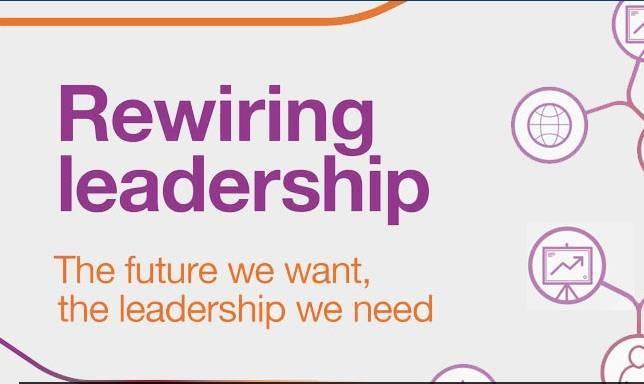

A framework has been created to help business to embrace ambitious, purpose-led, courageous leadership to shape the economy, instead of merely responding to problems.
The innovative guide has emerged from research by Cambridge University’s Institute for Sustainability Leadership, which concluded that businesses had always lacked the means to grasp the opportunities to change attitudes.
Climate change and wealth inequality are among threats to business and society for which novel solutions are available if business directors and executives take the lead, says the institute’s report.
Regulation by governments, which is slow and reactive, is not enough, says the report, Rewiring Leadership; the Future we want, the Leadership we need.
Businesses are told leadership to meet today’s challenges is required through all strata of an organization, and teams dedicated to leadership development and human resources are vital in recruiting, training and inspiring the right individuals.
The institute gives the example of Anglo American, the UK-based multinational, which has introduced a purpose-led strategy. The company’s new approach seeks new ways to make mining safer, more efficient and more sustainable and to minimize its environmental effects.
Desray Clark, the company’s head of leadership development, said: “This is crucial for a 100-year-old company like Anglo American and others in this sector.
“If we want to succeed in the long term we need to innovate, stay ahead of the curve, but we need to do this whilst improving the lives of our employees and society.”
Anglo American’s thinking is in line with the institute’s belief that businesses must cultivate leadership at all levels and that the diverse and complementary strengths and approaches within them must be fully used.
The institute says its guidance, called the Cambridge Impact Leadership Model, would give all leaders opportunities to nurture innovation, manage risk and exert influence wherever they work to reach society’s broader goals.
Clark observes: “We have learnt that this is the only way to ensure that we deliver against our purpose.
“In the past, like many organizations, we reserved leadership development for select senior leaders who would return from their training, ready to implement what they had learnt – but the system was not ready for them.
“Now we realize the importance of adopting an inclusive culture where leadership development is tailored for all employees. We realize that one size doesn’t fit all.
“If we want to deliver on our purpose, it is crucial that all of our 87,000 staff understand and value this purpose and, most importantly, are equipped to deliver the outcomes we need to thrive.”
The model stipulates that leadership is motivated by the conviction that business success goes together with delivering social and environmental outcomes, that it is built on thinking, values and practice to hit those targets, and that it continually reflects and adapts and holds itself accountable to deliver.
The report points out that the business case for ethical conduct benefiting society and the environment is evidenced by such companies as GE, Ikea, Natura, Nike, Toyota and Unilever, which are reaping the rewards of offering green products and services, now worth $100bn (£72bn, €80bn).
It says Unilever’s purpose-driven brands are growing twice as fast as the rest of its portfolio and if GE’s Ecomagination growth strategy was a standalone business it would be a Fortune 100 company.
Last word from Unilever chief executive Paul Polman: “I’m yet to meet a business leader who wants to see their business contribute to more air pollution, or more children going hungry, or more plastic in the oceans.
“Most are driven by an instinct to be a force for good in the world. But leading for the scale of change that is needed, as this report highlights, is not easy or straightforward.
“It takes courage, a willingness to put long-term needs ahead of short-term expedience and – above all – an ability to think systemically and to operate in new and collaborative ways. It can be done but it will indeed require a ‘rewiring’ of leadership.
“For those embarking on the journey, this report provides an ideal place to start.”
Building an Inclusive Company in a Diverse World
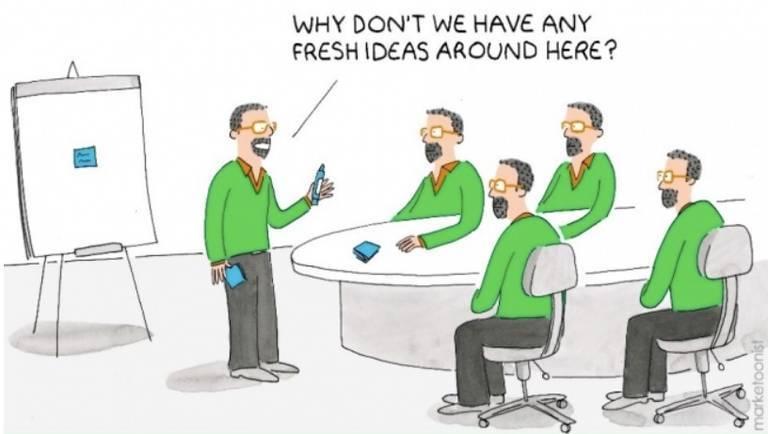

By Olivier Blum
If we think about it, what is it that makes our world special? Chances are that each one of us will have our own unique answer to this question, and that’s exactly the point. We live in a wonderfully diverse world, and there can hardly be any doubt about that. So, it’s difficult to understand why and when did we start to value sameness so much; why don’t our workplaces mirror the diversity that’s all around us; and why is our society still dogged by exclusion?
Research also suggests that embracing differences can be a huge strength. A McKinsey report[1] on 366 public companies found that the more ethnically diverse their management was, the better their financial returns turned out to be. Similarly, a global analysis of 2,400 companies by Credit Suisse[2] found that organizations with at least one female board member enjoyed both a higher return on equity, and net income growth than those without.
While there is no dearth of evidence to support diversity and inclusion (D&I), does D&I really require a business case? Isn’t it quite simply the right thing to have? However, there is a paradox that confronts us – on the one hand we have become more global in our outlook, and more connected as people, while on the other, ultra-nationalism seems to be rising, and becoming more widespread. But, I believe people, especially the younger generations, don’t want to live in a world of exclusion. They aspire to create a better place to live, and work where everyone feels included, and can be themselves without any fear or reservations.
In this backdrop of the business research, ethical considerations, and the geo-political context, are organisations able to power their D&I vision? Unfortunately, not really. Although, recent events have certainly created a greater desire and momentum, progress has not been easy. For instance, the number of women and minority leaders in corporations remains stubbornly low. In PwC’s global diversity and inclusion survey[3], while 87% of the respondents expressed a strong commitment to D&I, nearly half of them said that D&I was a serious barrier to employee advancement within their organizations.
Is it time therefore to look at D&I through a different lens? I would say yes, and the first big change is that we cannot continue to look at diversity without considering inclusion. Diversity may be visible through representation, but inclusion is characterized by acceptance within diverse teams that in turn creates room for mutual respect, and multiple perspectives. Simply put, diversity is meaningless without inclusion. However, without a greater sense of urgency in making this change, I am afraid we might have to wait for a new generation of leaders for the transformation to succeed.
I am convinced that global corporations must become visible role models, and advocates of change within society. There is great value in contributing to the debate by sharing experiences, and learning from others.
At Schneider Electric, we are not perfect, but there is an unwavering D&I commitment, and ambition for a sustainable tomorrow.
Schneider Electric Commitment to D&I
We believe that “Access to energy is a basic human right” – our aspiration is to improve the lives of people everywhere in the world by developing sustainable energy solutions for our customers. This belief also extends to our D&I philosophy. Our ambition is to offer equal opportunities to everyone everywhere, and we want our employees — no matter who they are, or where in the world they live — to feel uniquely valued, and safe to contribute their best. For us diversity of people, and an environment of inclusion generate greater engagement, performance, and innovation.
Multi-hub Business Model
We want everyone everywhere in the company to have the same chance of success, irrespective of their nationality or location
To deliver on this ambition, we transitioned from a one-headquarter model (concentration of global roles) to a multi-hub model, and relocated key jobs to these hubs to create a global leadership structure. We realized that people were not mobile, so instead of asking them to relocate, job opportunities were created closer to them. A few years ago, most global jobs were concentrated in our European headquarters, but the current picture looks remarkably different. This new disruptive model has turned out to be a great move for the company, and our talents. Across the world, people now have equal opportunities for growth; locally empowered teams are in place for our customers; and there’s greater diversity in nationalities within Schneider Electric. There is an ongoing effort towards an equal spread of global jobs across Europe, the Americas, and Asia-Pacific.
Leadership Diversity
We want our leadership to reflect our business footprint, as well as the diversities of the communities in which we operate
To ensure that our leadership reflects the global community in which we operate, the priority is to have diversity in gender, nationality, and generation. By actively fostering an environment of inclusion for everyone (practices and behaviours); identifying and growing leaders from new economies; and providing opportunities for five generations to work side-by-side, it’s possible for everyone at Schneider Electric to see a path for their own growth and success.
Inclusive Practices and Policies
Diversity is challenging because it highlights what makes us all unique. To make it work we must hardwire it through policies and practices
Policies are cultural symbols, and so D&I is being hard-wired within policies and practices. For example, our new Global Family Leave policy launched in 2017 allows everyone to manage their unique life and work by providing time off for occasions that matter the most. Another instance is the salary equity process to establish workplace gender equality. Going a step further, a commitment has been made within our Planet and Society barometer to a time-bound, worldwide implementation of the Global Family Leave policy, as well as salary equity. Performance against this barometer is one of components for determining executive compensation. By enacting and reinforcing policies like these, we hope to establish a true sense of belonging for all Schneider Electric employees.
Inclusive Behaviours
To lead in a diverse environment, our leaders must become aware of their own biases, and take accountability for building inclusive teams
A true D&I environment must permeate throughout the organisation. In 2017, hidden bias education was rolled out to our top leaders, role modelling the change we want to drive. That rollout will continue to all managers in the coming year. However, training alone will not result in a culture of inclusion, and deliberate practice of these behaviours will need to be reinforced, rewarded and recognized to create lasting impact.
A Journey, not a Milestone
Diversity for diversity’s sake, and the absence of inclusion can lead to chaos and inefficiency. But, there are huge positives for any organisation that perseveres. In an increasingly complex business environment, finding a way to blend diversity in thought and ideas not only makes an organisation more human, more competitive, and more fun, it might be the only way to achieve sustainability.
At Schneider Electric, Diversity and Inclusion is our marker, it is our differentiating factor for the future, and that’s why great people make Schneider Electric a great company.
Olivier Blum is Chief Human Resources Officer, Schneider Electric
Image: Schneider Electric
[1] http://www.mckinsey.com/business-functions/organization/our-insights/why-diversity-matters
[2] https://www.credit-suisse.com/us/en/about-us/media/news/articles/media-releases/2012/07/en/42035.html
[3] https://www.pwc.com/gx/en/services/people-organisation/global-diversity-and-inclusion-survey.html
Who Owns the Physical Risks from Climate Change? (And What One Move Can Make It Less Risky?)


We hear a lot about how the anticipated rise in sea levels could trigger significant increases in hurricane-related financial losses. But who pays that cost? Who, for instance, is bearing the cumulate expense of the 16 U.S. weather events in 2017 estimated at over $306 billion, far exceeding the previous record of $214.8 billion in 2005? It’s not immediately clear. And the financial markets haven’t yet clarified who owns our risky future.
So, let’s first consider who comprises the potential financial risk holders, assuming the physical risk is coastal flooding:
- Insurance/Reinsurance companies who transfer risk from property to market.
- Homeowners handling the aftermath, from soggy basements to ripped-off roofs.
- Developers, the decision-makers who place buildings in and out of harm’s way.
- Utilities, the critical service providers who rely upon conduits of every sort to transport water, energy and vehicles with revenue generated through fees.
- Cities and municipal governments: owners of property and caretakers of constituents and the last line of the government safety net and taxation.
- National governments, the agents of emergency management and loans and grants through various government mechanisms.
- Engineering and construction companies that design and build using vulnerability data.
- Lenders who use the collateral of buildings to offer debt finance to property owners.
- Investors: They place bets on the market, often without knowing who and what the actual investment is and does.
- Taxpayers who, especially for federal taxes, pay for distant emergency relief and reconstruction through programs like the national flood improvement program.
Regarding the recent storms, where in the market are we seeing this risk ownership? First, there are the householders and other property owners, insured or not, who are replacing their material goods after extreme events. Second, insurance companies are transferring some risk away from the property owners into a large pool of insured from diverse geographies. Third, the federal government that pays out through national flood insurance and other programs of one sort of another. (Ultimately, of course, the risk is held by us property owners who pay insurance and taxes.)
But, let’s examine what each of these three players could do to decrease the risk to the marketplace sparked by climate change:
Insurers
Can insurers better inform the market as investors as well as underwriters? As investors, the insurance industry continues to develop? As specialists in risk
identification, risk prevention, risk mitigation and post event recovery, the industry employs Smart Risk Investment principles to, among other things, redefine “green finance” as “smart risk investing” and increase the volume of such investments. This should allow them to bring in all investable asset classes and overlay the risk management and pricing knowledge to the asset side from the underwriting side of the insurance sector balance sheet.
Of course, as underwriters, insurers can decrease risk by sending a market signal, although the price of risk from those particular assets is higher than others. Already, we see this happening somewhat.
Taxpayers
Taxpayers play several roles. First, they can harness relatively new tools to make better decisions, especially about where they purchase property. For instance, residents of Florida and Virginia should check out the free https://floodiq.com/. Second, primarily as voters, they can decrease risk by influencing ele
ction outcomes and voicing concerns to local, county, special district, state and federal elected officials. Those concerns can range from land use changes in the zoning code to prevent more coastal development and requirements for resilient infrastructure to changes in the federal insurer-of-last-resort process to decrease reconstruction of properties that flood repeatedly.
National Government
Speaking of which, in the U.S., the National Flood Insurance Program needs reform, which may explain why it’s reauthorization was kicked down the road in September and remains outstanding. An informatively whitepaper, Strengthening the National Flood Insurance Program, largely written by Georgetown Climate Center’s Jessica Grannis, addresses the key issues of adaptation equity and provides ways for taxpayers to avoid paying for the continual rebuilding of property in harm’s way.
Solution
The June 2017 guidelines by the G20 Financial Stability Board Task Force for Climate-related Financial Disclosures are a useful start. This series of recommendations sets out a voluntary, consistent disclosure framework for climate-related disclosures so that companies report on physical climate-change risks that affect business, operations, and financial conditions. But, for us who are a bit more distant from the G20’s big business, what shall we do?
One suggestion is that every decision-maker– from homeowners to mortgage bankers like Fannie Mae – integrate “stress-testing” into their decision-making and, for instance, ask what the impact would be of a one percent event on their portfolio. The insurance industry as underwriters, in an effort precipitated by Hurricane Andrew in the early 1990s, initiated such a process, which they call the one-in-100-year stress test. Arguably, it contributed to the continued strength of that market sector even after significant hazard -event years such as 2017 (when Hurricanes Maria, Harvey, Irma and Maria, fires and related mudslides created demand from policyholders for insurance payouts).
What might this one practice deliver? Could it include these outcomes? A reduction in the construction of new risky buildings in flood prone areas; improved returns (at systems-level) of allocated capital since less money would be wrapped up in risky business; acceleration of collaboration across sectors to decrease the one percent event causing harm; reduced vulnerability of communities and a signal that it was a good investment to focus on resilience technologies, innovations, products and services.
What do you think?
Joyce Coffee is Founder and President of Chicago-based Climate Resilience Consulting.
Photo: iStock
How and Where Diversity Drives Financial Performance
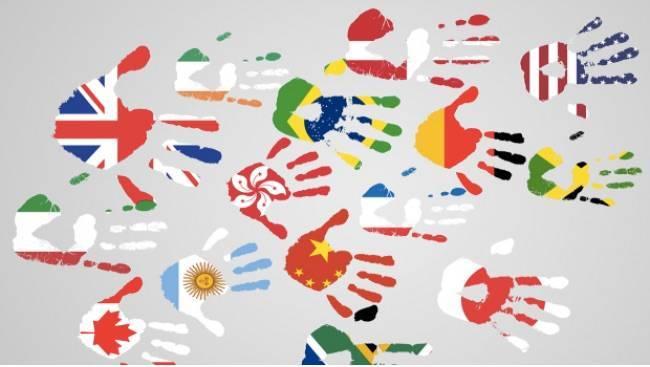

By Rocio Lorenzo and Martin Reeves
Diversity is both an issue of fairness and, some say, a driver of innovation and performance. To assess the latter claim, we undertook a large, cross-country study into the relationship between multiple aspects of managerial diversity, the presence of enabling conditions such as leadership support for diversity and innovation outcomes.
We surveyed more than 1,700 companies across eight countries (the U.S., France, Germany, China, Brazil, India, Switzerland and Austria) and a variety of industries and company sizes, examining diversity in management positions, measured with respect to gender, age, national origin, career path, industry background and education.
The outcome
We found that indeed there was a statistically significant relationship between diversity and innovation outcomes in all countries examined. Furthermore, the more dimensions of diversity were represented, the stronger the relationship was.
We also found that diversity had gained momentum as a topic in more than 70 percent of the enterprises surveyed, especially in developing economies. Most important, we found that the most diverse enterprises were also the most innovative.
When we looked at the enabling conditions for diversity, including fair employment practices (such as equal pay), participative leadership, top management support for diversity and open communication practices, less than 40 percent of firms employed them. And not surprisingly, firms that had such practices in place had better diversity scores, and as a result better innovation performance.
This strongly suggests that diversity represents a tangible missed opportunity and significant potential upside for most companies. In total, the presence of these enabling factors is worth up to 12.9 percent points of innovation revenue.
Given the importance of globalization and technology as drivers of performance, we also looked at the impact of these two factors on the relationship between diversity and performance. We found that the diversity impact was highest for companies that had a high emphasis on digital innovation, as measured by their digital investments as a proportion of operating expenses.
We also discovered that the relationship between diversity and innovation was stronger for companies with significant operations and interests in multiple countries.
The power of diversity
Diversity has sometimes been critiqued as a culturally normative concept. Our results show that diversity can drive innovation performance in countries as different as Germany and India, however. Moreover, they imply that it can so do in a variety of ways.
The secret of making diversity work appears to be to apply the concept at multiple levels — to address diverse dimensions of diversity, and to be open to diverse routes to achieving success. Of course, the correlations we observed are not guarantees that human diversity will drive innovation.
The power of diversity still needs to be unlocked with enabling practices, like a non-hostile work environment, an inclusive culture, and a culture where diverse ideas resulting from a diversity of backgrounds are free to compete.
Rocio Lorenzo is Partner, Boston Consulting Group
Martin Reeves is Senior Partner and Managing Director, Boston Consulting Group
This article originally appeared on Harvard Business Review and was distributed by 3BL Media.
Photo: 3BL Media
Fresh Perspectives from Women in Venture Capital
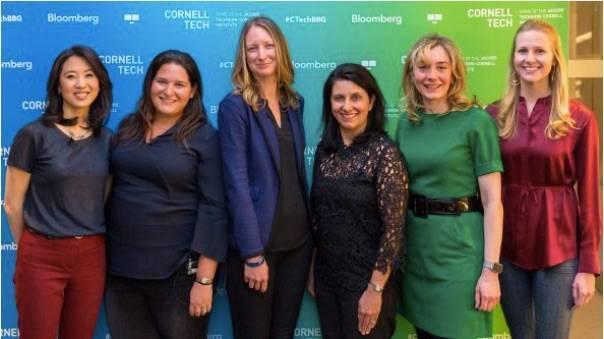

By Bloomberg
Venture capitalists from some of NYC’s leading VC firms joined Bloomberg, Cornell Tech, and Tech:NYC at Bloomberg’s New York headquarters to discuss how to close the gender gap in the technology industry.
Introduced by Bloomberg Beta founding partner Karin Klein, Rebecca Kaden, partner at Union Square Ventures, Beth Ferreira, managing director at FirstMark Capital, and Ellie Wheeler, partner at Greycroft, joined moderator Scarlet Fu of Bloomberg Television on a panel to share their own experiences at the latest installment of the CornellTech@Bloomberg series at Bloomberg.
Rebecca, Beth, Ellie, and Karin represent inspiring examples of talented women who took control of their career paths within the world of technology to get where they are today.
The path for women in technology is an uphill one. In 2017, fewer than six percent of all decision-makers at U.S. venture capital firms were women. At the same time, female founders received just $1.46 billion in funding last year, which is less than three percent of the $58.2 billion in funding raised by companies with all-male founders. While women are still a minority in the technology industry, New York City’s tech community is making us hopeful.
Rebecca Kaden said: “I’m a big believer that female VC’s on both coasts do not have the numbers yet, but the quality is enormously high. Maybe that’s because it’s harder industry to get into, maybe that’s because women had to climb through a maze of a career path, but it’s a very, very high quality and high caliber group of people. I think there’s a real commitment to each other to support each other and to help each other’s career.”
Panelists and other female venture investors are beginning to address the gender gap by cultivating inclusive environments in a broad number of spaces – from venture capital to technology to engineering and entrepreneurship – all of which have traditionally performed poorly on the diversity front.
Beth Ferreira sees obstacles faced by women in tech, in some cases, as an opportunity: “Any time that you’re underestimated, it’s a huge advantage. I think there are a lot of tools that we have that we can use to our advantage, and that’s one.”
The wide-ranging panel discussion also touched on issues faced by young entrepreneurs and investors – women and men alike – as well as the possibilities, obstacles, and advice for individuals as they embark on their professional journeys.
As Ellie Wheeler said: “[Female representation in venture capital] is going in the right direction, and hopefully that momentum will continue, and that it will become a financial necessity because that will be what drives change there, when it hits the bottom line — whether that’s fund returns, or within companies, that’s what moves things.”
Karin Klein’s opening remarks hinted at the future where that financial necessity is likely: “At Bloomberg Beta, we are investing in the companies who are making the future of work better. And the future of work is diverse. The reason for that is logical: people make much better decisions when there is diverse input.”
Photo: Bloomberg Television Anchor Scarlet Fu sat down with Rebecca Kaden, Union Square Ventures, Beth Ferreira, FirstMark Capital & Ellie Wheeler, Greycroft for “Women in Venture Capital: Fresh Perspectives” as part of the CornellTech@Bloomberg Speaker Series held at Bloomberg World Headquarters in New York on February 28, 2018. Photographer: Lori Hoffman/Bloomberg.
STEM Increases Diversity While Teaching Skills
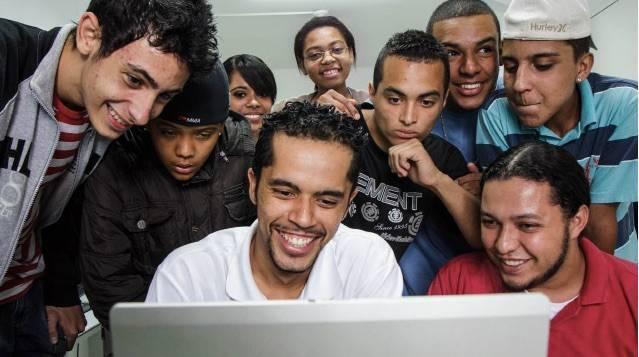

Science, Technology, Engineering, and Mathematics (STEM) programs are teaching valuable skills to youth—and, at the same time, increasing diversity through outreach to girls and students of color.
One of the larger and long-time programs, the Cisco Networking Academy, the teaching arm of Cisco Systems, has announced that it now serves 1.3 million students in 180 countries annually.
The figures were given as the Academy marked its 20th anniversary at a celebration with operatives and students in Jefferson City, Missouri.
The Academy offers training in cybersecurity, networking, computer programming and other disciplines as part of its science, technology, engineering and mathematics initiative, known as STEM, which is becoming adopted by more and more employers to implement corporate responsibility and increase diversity.
The STEM programs are delivered in 19 languages and take on various shapes specific to companies and their strategies.
All, however, are aimed to equip their students with vital IT skills and enhance the CSR and ethical standing of their companies.
Tre Malik, a Missouri graduate now employed as a network engineer at an internet company, told the Jefferson City meeting: “[The Academy] is the reason for my success. It opened so many doors and opportunities just two years out of high school.”
Many of the students offered STEM skills at Booz Allen Hamilton, a management and IT consultancy in Virginia, are school-age girls. The company’s intention is to bridge the gaps in the tech fields in which women and minorities are under-represented.
Susan Penfield, the consultancy’s chief innovation officer, told the gathering: “Today’s kids are tomorrow’s problem-solvers, inventors and visionaries, and by encouraging young girls to pursue their passion for science, technology, engineering and math, we are ensuring a strong pipeline of STEM talent.”
Lindsey Sayers, now an engineering manager, gained her chance at Edison International, a public utility holding company in California, having built a strobe light in her high school electronics class and watched in awe when she plugged it in and caused the light to flash.
After taking up her job, she and an engineering colleague, Edgar Pabon-Hernandez, visited young people at an elementary school in Diamond Bar, Los Angeles county, and helped them to build an electrical circuit similar to the strobe device she constructed in school.
Torieaun Hilbert was pushed by his grandmother to participate in the Long Beach Math Collaborative, a California partnership with an emphasis on STEM, and on preparing African-American males for college.
He was helped by executive director Doris Robinson to improve his qualifications and graduated with the most scholarships in his senior class.
Robinson said of her students: “They have to believe they can reach the highest level of achievement.”
Hilbert, now a sophomore majoring in criminology, recalls: “I grew up in foster care. I didn’t have anyone who could explain to me how important education is.”
The STEM program appears to be making inroads into the shortfall between IT skills supply and demand. Cisco’s academy proudly maintains the courses produce measurable practical results and nurture softer achievements such as collaboration, leadership, innovation and entrepreneurship.
Photo: Cisco Networking Academy
Non-GMO Project Verification Takes Food Manufacturers by Storm


By Brandon Nauman
As one of the fastest growing value-added labels in modern grocery history, the Non-GMO Project Verified label has tapped into one of the core memes of the current zeitgeist – the quest for authenticity. As food and agricultural technologies advance with ever increasing speed, so too, it seems, does the demand for simplification, a harkening back to the way things were. This is not merely nostalgia, however – it is undeniable that the industry is confronted with deep ethical questions and a fear of letting the genie out of the bottle without fully evaluating the consequences.
Finding themselves in the middle, brand owners and food manufacturers are now reexamining their suppliers and production operations to determine how best to meet this demand. As a critical link in the supply chain, they have responsibility for maintaining the integrity and identity of non-GMO products and their inputs. In this short article, I will outline the key steps participants must undertake to obtain verification under the Non-GMO Project.
From the outset, it is important to know that participation is sometimes established at the brand owner level; therefore, not all of the facilities in the supply chain are necessarily required to be Non-GMO Project Verified. However, regardless of whether the participant is a brand owner or a manufacturer, specific information is required for each facility that handles, processes, packages, or labels products that are Non-GMO Project Verified. In all cases, the participant must work closely with the facilities involved in the production chain to facilitate the provision of records needed to complete the evaluation.
The first major step is to gather and submit facility documentation. Participants must show that facilities involved in handling, processing, packaging, or labeling products, including any contracted facilities, are physically capable of meeting the requirements of the standard, demonstrated with supporting documentation. For instance, facilities that process high-risk inputs must provide written standard operating procedures, input source documentation, lot control/identity preservation information, batch and production records, and sales or outbound documentation. Coordinating communications among all of the facilities is essential for streamlining the review.
Once documentation is submitted and reviewed, on-site inspections may be deemed necessary, focusing on the ways in which facilities preserve the identities of approved inputs. Facilities that use only low-risk inputs, or high-risk inputs that meet exemption criteria, do not need to undergo inspection, nor do facilities that are not engaged in parallel production. Contract processors who would otherwise require an inspection are eligible for a three year exemption period.
Following the inspection, an audit report is prepared. This report includes a discussion of any potential issues or findings identified during the inspection related to areas of non-conformance or opportunities for improvement. Participants will have an opportunity to discuss these issues with the auditor, then take next steps to correct non-conformities.
Once verification is completed, a certificate of compliance valid for one year is issued, and food manufacturers are permitted to use the “Non-GMO Project Verified” seal on product packaging.
Brandon Nauman is Associate Managing Director of the SCS Global Services Food and Agriculture Division and manages its organic and non-GMO programs.
Photo: SCS Global Services
Why You Should Delete Your Data When Crossing the Border
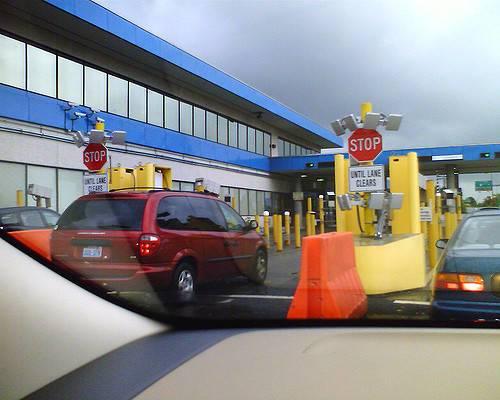

By Scott Huntington
Have you crossed any international borders recently? It can be a little nerve-wracking. The rules on the other side of that imaginary line are different in every country, and keeping track of how the laws work in several different countries can be a challenge. Sometimes the rules change very rapidly.
You probably know enough to avoid bringing illicit drugs or weapons across international borders. But sometimes, it’s the things you’re allowed to bring, but should leave for your own security, that can get you in trouble. We’re talking about private data.
A Matter of Homeland Security
Whether or not you’re a person of interest crossing into Russia or China is one thing, but here’s the truly frightening reality. This article is not about Russian or Chinese border policy — it’s a response to the increasingly draconian tactics of the U.S. Customs and Border Patrol.
President Trump has upheld and expanded multiple policies that allow agencies like the FBI, CIA and CBP to snoop into your private goings-on. Their level of access goes up if you’ve had any correspondence with people living outside of the United States.
More and more people are reporting their devices being seized, or even demands to supply password information to the CBP. So, what should you do if you’re planning an international trip and don’t want your privacy compromised?
Stay Calm and Delete Your Data
If you’re not a “suspicious person” — a term that now, for some reason, applies to your ethnic background — there’s still a good chance your private information is safe. But if you do need to travel with a device that’s carrying sensitive data, the best thing you can do is move that data off it.
Should authorities confront you and ask you to turn over your device, you’re probably not planning to run for it. International security involves strong layers of protection, including armed guards and robust crash barriers that can stop a 65,000lb truck at 50 mph. But you can back your device up to a cloud service beforehand and then wipe all data.
We also recommend using an encryption solution such as Apple’s Filevault or Bitlocker, and turning your device completely off before going through security to maximize the encryption service features.
If Your Device Gets Confiscated
Even though you have a right to privacy, the CBP may ask you to supply credentials for your phone or computer. If you want to fight the case, be prepared to spend long hours waiting in a dimly lit room. While the CBP can’t technically request access to your cloud-based information without a court order, the scenario isn’t out of the question.
Should you choose to cooperate, make sure you enter credentials yourself and do not divulge them to the security agents. Once compromised, your information could be shared through the government Intranet.
Alternatively, you could wait it out, and — if you’ve taken the right steps — there’s not much the CBP can find out right then and there. Be warned you might want to alert friends and family, and potentially a good attorney, before crossing the border if you think this is a possibility. Some people even travel with a dedicated set of travel devices, rather than their usual personal equipment, to guarantee no sensitive data is with them.
A World Without Privacy
Just how much all this bothers you is a different question for everyone. For example, younger people these days seem not to think much of privacy, since they’ve grown up in a world where the concept has a very different meaning than it did 50 years ago.
However, if your employer is counting on you or you have concerns related to your personal data, there are things you can do. Neglect will only catch up to you when it’s too late and there’s a stern-faced agent having a forward conversation with you. So be one step ahead of the game and travel with the confidence that your bits and bytes are safely locked down.
The UN Deserves Credit for Its Role in Business Becoming More Responsible
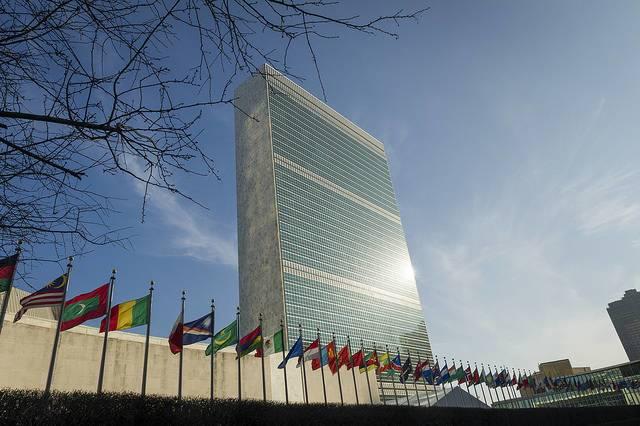

It wasn’t called “CSR or “ESG” until recently, but for over 50 years, the United Nations has been urging companies to respect human rights, be stewards of the environment environment and overall, adopt more responsible practices across the board. It’s quite a history, with the sustained effort playing out through a number of programs over five decades.
To that end, the Swiss journalist Frédéric Burnand reviewed the key UN processes and milestones shaping this history. As Switzerland debates whether it should mandate corporate responsibility by law, Burnand’s work reminds us that bottom line, the UN deserves to be recognized for its pioneering work in developing what today is known as corporate social responsibility (CSR).
From the emergence of the UN’s Conference on Trade and Development (UNCTA) during the mid-1960s, to this decade’s launch of the Sustainable Development Goals (SDGs), the UN has been leading. The global body has strived to bring stakeholders together to narrow the gap between the wealthier and poor countries, has implored businesses to respect human rights and now has developed guidelines that offer companies ideas on how they can be instrumental in ensuring sustainable development this century.
If there is one criticism of the UN’s effort on this front, it has been that there have been so many initiatives that it is difficult to keep track of them all. For example, at the turn of this century, the UN Global Compact suggested 10 guidelines for companies to follow in order to improve their performance on human rights, labor and the environment. Companies can still participate in the Global Compact, and many multinationals remind their stakeholders that they are part of this program. But while that list includes marquee names such as Nestlé and SAP, one challenge many CSR practitioners elsewhere face is standards fatigue - so it behooves the UN to find ways to help businesses execute CSR, not just relegating it a series of tasks that end up boxes being checked off a list.
Of course, the result is not necessarily a bad situation, as more companies in recent years have realized the benefits of developing a corporate responsibility or sustainability agenda. Burnand pointed out that the global business community has come a long way since the days when earlier UN efforts were often met with resistance from multinationals. Now, we see companies and even accounting firms finding ways to align themselves with this decade’s SDGs - and the advantage these guidelines have is that they provide companies a framework that not only makes it seamless to execute these goals, but to communicate them as well. Whether or not the SDGs actually take root or not, the fact is that corporate responsibility has come a long way this decade - and the UN deserves far more credit that what it has earned over the past half century.
Image credit: United Nations/Flickr
600 Companies, More Senior Executives Commit to Sustainability Policies


Record numbers of the largest and most influential companies in the US have been found in new research to be committing themselves to ambitious sustainability policies.
The optimistic report, tagged Turning Point, has been released by the Boston-based non-profit sustainability consultancy Ceres, which seeks responsible solutions with prominent investors and companies.
The findings, following up on an original 2014 assessment, Gaining Ground: Corporate Progress on the Ceres Roadmap for Sustainability, show that nearly two thirds of the more than 600 companies covered intended to reduce greenhouse gas emissions.
In addition, more than half of the companies are said now to have formal water management policies, and nearly half are committed to workers’ rights.
Ceres says sustainability is now supervised by senior executives in more companies. Today top-level people are responsible for sustainability performance in 65 per cent of the companies, up from 42 per cent in 2014, and high-level officers handle greenhouse gas emissions reductions in 98 per cent of the companies and water management in 97 per cent.
However, flaws are highlighted by Ceres too. Although 69 per cent of the companies asked suppliers to minimize environmental and social impacts, only 34 per cent provided the means to take action.
A commendable 64 per cent of companies were committed to cutting greenhouse gas emissions, but only 36 per cent set clear goals – and only a quarter of the targets were for a 25 per cent cut by 2020.
Although 32 per cent conduct materiality assessments, far more than the 7 per cent listed four years ago, only 6 per cent say how the results guide planning and decision-making. On water control, 55 per cent were committed but only 15 per cent set priority targets in the areas of highest risk.
The researchers’ key recommendation is for all companies to intensify sustainability action.
On a positive note, the report, using data from Vigeo Eiris, a London-based global provider of environmental, social and governance research, says many of Ceres’ expectations are met by Citi, Coca-Cola, CVS Health, Gap, General Mills, Intel, Kellogg, Nike and PepsiCo.
Jerry Lynch, chief sustainability officer at General Mills, the US multinational consumer foods group based in Minneapolis, said: “We know that feeding a growing population depends on a healthy planet, so we’ve taken bold actions to advance sustainability.
“Transforming our global food system and our business model requires collaboration and transparency across our supply chain, along with strong commitment from our executives and board of directors.
“While transformation brings many challenges, we see immense opportunities for leadership, innovation and growth as we move toward the sustainable future envisioned in Turning Point.”
At the international bank Citi, headquartered in New York City, Val Smith, the managing director and global head of corporate sustainability, said: “We look forward to using Turning Point to help us identify areas where we can prioritize action and strive further toward sustainability leadership.”
Photo: Ceres